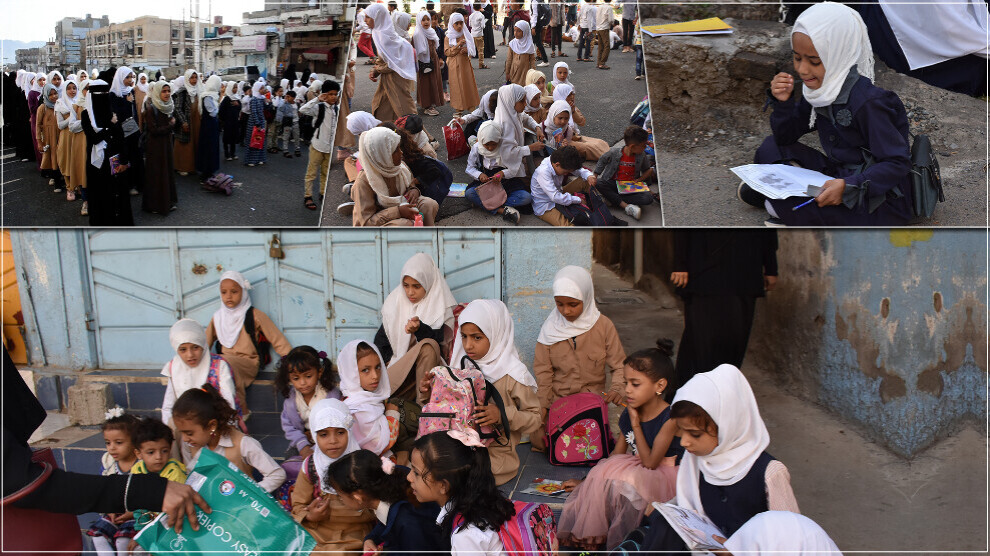Yemeni children receive education outdoors
The eight-year-old conflict in Yemen casts a shadow over education. While children receive education on Yemen’s streets, their families are concerned about the situation of their children.

RANİA ABDULLAH
Yemen- Women and children are most affected by wars and conflicts. The conflict that broke out in Yemen in 2015 casts a shadow over education, the new school year. While many children dropped out, many receive education in destroyed buildings, amid the sounds of shooting.
Education continues on the streets
Students of Salah al-Din School in the city of Taiz, southwest of Yemen have received education on the streets after they were forcibly removed from the alternative building of their school on September 11. Ilham Al-Salahi's eight-year-old daughter is one of the students of the Salah El-Din School. She was shocked when her daughter told her that they have received lessons on the street next to the school. “The next day I went with my daughter and saw the situation of the students. I felt very bad when I saw them receiving lessons on the street. How safe can children be on the street… I am afraid that something will happen to my daughter,” she told us.
They were forced to leave the hotel”
Many schools in Yemen have been destroyed and some buildings are used as schools. The building of the Salah al-Din School is one of these schools. The building of a hotel in the city was used as a school for a while. One of the teachers of the school, Iqbal Abdo Saeed said, “We used the building, which was a hotel before the conflict, as an alternative to our school. However, the owner of the building forced us to leave the building. We applied to officials but we have received no response from them.”
“Safe buildings must be provided for children”
Nematullah Jarallah accompanies her sister to the street where the students receive lessons. “We hope that the students will complete their education despite these circumstances. Families are concerned about the situation of their children. The responsible authorities must provide safe buildings for children.”
The principal of Salah El-Din School, Mona Al-Jama said, “We had an alternative building to use as a school for five years. We made a great effort for the renovation of the building. However, we were forced to leave the building on September 11. Students have received lessons on the street for more than a week. Their parents do not have money to send their children to private schools. We do our best to support children in order to complete their education.”
“Our families are worried about us”
One of the students of the school, Abeer Marwan said, “I hope to complete this school year but I think I will not be able to because we do not have a building. Our families are worried about us and they do not want us to receive education on the street since the street is not safe for children.”
260 schools are partially or completely destroyed
According to the Education Office in Taiz, Salh District is one of the districts most affected by the conflict. The number of partially and completely destroyed schools in the city of Taiz is 260; 160 schools have been renovated by international organizations, Ministry of Social Affairs and Labor; six new schools have been built, according to the office.
According to the UNICEF report in 2019, two million children were out of school, including almost half a million dropped out since the conflict escalated in March 2015.
